Recent Publications
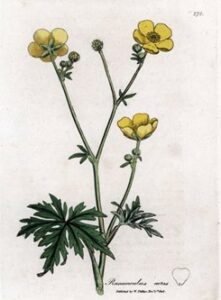
“Violence, Extinction, and Resilience in Alfred Döblin’s ‘The Murder of a Buttercup’”
Narratives of Resilience, eds. Kate Rigby and Evi Zemanek. Stuttgart: Metzler, forthcoming in 2025.
Alfred Döblin’s 1904/05 novella Die Ermordung einer Butterblume (The Murder of a Buttercup) offers a surprising tale of destruction, survival, and entanglement with the non-human world, displaying human hubris and blindness in the Anthropocene. While scholars have focused on the story’s pioneering Expressionist style delivered in stark imagery and piercing colors, its innovative narrative form, and its underlying gender dynamics, my ecocritical reading focuses on the growing disruptions between social and natural systems that expose both the fallacies of fossil capitalism and opportunities for ecological resilience that come with human and non-human interactions. As Döblin’s blindsided protagonist victimizes his natural environment, he presumes the natural processes to be linear and reversible, but ultimately falls victim to their violent agency. In contrast to most existing interpretations, I suggest such multidirectional violence is not the result of an individual pathology, but symptomatic of the relationship between humans and their environment in Western industrialized societies.
Keywords:
Anthropocene, Plant Studies, Metabolic Rift, German Expressionism
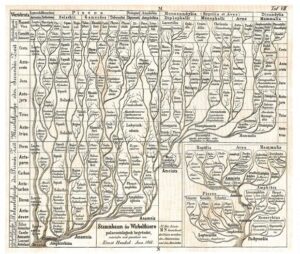
“‘Das Darwin stirbt aus!’: Judith Schalanskys Werke im Spiegel der Extinction Studies.” Text & Kritik 244 (2024): 24-31.
„Das Darwin stirbt aus!“: Judith Schalanskys Werke im Spiegel der Extinction Studies
Im September 2022 wurde Judith Schalansky als neunte Autorin eingeladen, ein Manuskript für die Framtisbiblioteket (Future Library) beizutragen, welches bis zu seiner Veröffentlichung im Jahre 2114 ungelesen, unlektoriert und unbekannt bleibt. In diesem von der schottischen Künstlerin Katie Paterson 2014 gegründeten Kunstprojekt sind hinter Glas nur die Titelseiten der bisher acht Manuskripte sichtbar, deren Anfang die kanadische Schriftstellerin Margaret Atwood mit Scribbler Moon verfasste. Zweifelsohne passt Schalansky hervorragend in die Reihe der Autoren*innen und in die Bibliothek der ungelesenen Bücher. Bereits in ihrem Atlas der abgelegenen Inseln. Fünfzig Inseln, auf denen ich nie war und niemals sein werde (2009) proklamierte Schalansky im Titel Abwesenheit und Unkenntnis als ein zentrales Motto. In Der Hals der Giraffe (2011) charakterisiert Schalansky den Menschen als ‟flüchtiges Vorkommnis”, ‟ein lustiges Fossil” und spekuliert: ‟Die Pflanzen aber blieben. Sie waren vor uns da, und sie würden uns überleben.” Darüber hinaus scheint das Schreiben in eine unbekannte Zukunft umso passender für eine Autorin, die sich in Verzeichnis einiger Verluste (2018) innig mit dem Voranschreiten der Vergangenheit und Markierungen der Einbußen auseinandersetzte.
Die extinction studies, wie es das Kollektiv der Extinction Studies Working Group formuliert, vereinen Anthropologie, Ethik, Geschichts- und Literaturwissenschaft und sie begreifen Aussterben nicht als singuläres Event sondern als komplexe Verkettung von Verlusten und Ableben. Schalanskys Werke setzen hier an und bieten neue Denkanstöße.
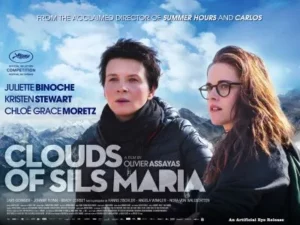
“Reframing the Bergfilm: Olivier Assayas’s The Clouds of Sils Maria (2014).”
Colloquia Germanica 56.4 (2023): 359-77.
This essay looks at Olivier Assayas’s The Clouds of Sils Maria (2014) both as a female mountain film and a revision of the genre altogether. Like the German Bergfilm, Sils Maria is framed by a tension between modernity and mountains, where protagonists escape to an isolated and privileged space high up to find meaning and face death. Unlike their heroic masculine counterparts in the mountain film, however, the two women encounter no climbing dangers and conquer no peaks. Yet they too are guided and changed by an imposing and dynamic landscape while wandering among the Swiss Alps and skinny-dipping in icy mountain lakes. Like in the German Bergfilm, the protagonists’ (homoerotic) relationship is developed, tested, and strained in the mountains where desire, jealousy, and loneliness come to the fore, with the important difference that characters navigate different languages, nationalities, age groups, and social status as they act, mirror, and switch roles for the play within the film, The Maloja Snake. Instead of the summit position as the ultimate goal of mountaineering, the film thus outlines a mountain position less determined by gender, physique, and nationality. In the symbol of the rare and unexplained cloud formation likewise called the Maloja Snake (captured in time-lapse photography by both Arnold Fanck and Assayas), Clouds of Sils Maria offers a contemplation on deep time, timelessness, and the passage of time, and opens a space for a contemporary mountain film.

“Disease, Extinction, and Emergences in T.C. Boyle’s A Friend of the Earth and Margaret Atwood’s Oryx and Crake.” Co-authored with Heather Sullivan.
Mensch & Mitwelt, eds. Jonas Nesselhauf and Urte Stobbe. Hannover: Wehrhahn, 2022. 81-98.
In this essay, we address Boyle’s A Friend of the Earth (2000) and Atwood’s Oryx and Crake (2003) as climate fiction that plays out equally devastating yet realistic futuristic scenarios. In creative thought experiments, science fiction helps us to recognize humans as a collective force, a force that conquers, shapes, destroys, and rebuilds the planet in pre- and post-apocalyptic bouts not unlike the pre- and post-pandemic times we are now experiencing. Our focus on these two science fiction novels is on the intersectionality of emergent environments, extinctions, and diseases within the framework of climate change.
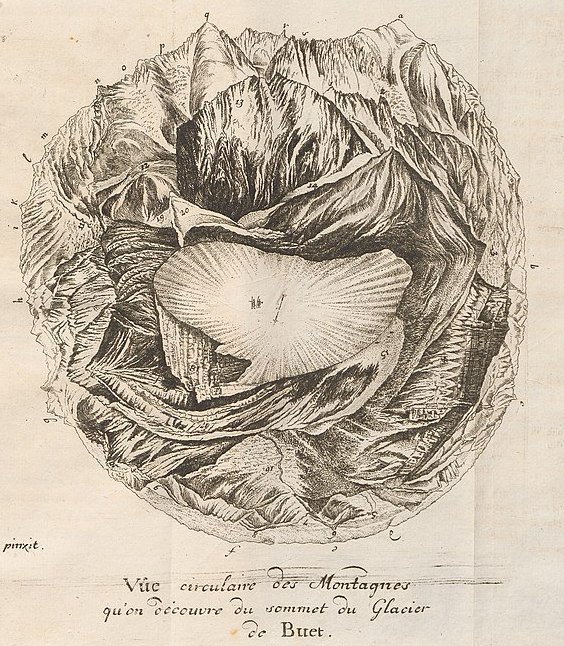
“Von der topographischen Karte zum 360° Panoramablick: Die Berg-Bilder des Horace-Bénédict de Saussure,”
Bilder in Bewegung, eds. Patricia Gwozdz, Tobias Kraft, Markus Lenz. Berlin: De Gruyter, 2021. 269-82.
Während Saussures Mont Blanc Besteigung in der Forschung zur Genüge gewürdigt und erörtert wurde, beleuchtet mein Beitrag die Wechselwirkung von visuellem Schauspiel, bewegter Körpererfahrung und naturwissenschaftlicher Forschung sowohl nach Saussures Schilderungen als auch nach acht Abbildungen aus dem ersten Band der Voyages dans les Alpes. Dabei konzentriere ich mich auf die Besteigung des Mont Buet (3,096m), den Saussure über ein Jahrzehnt früher, nämlich 1776 und 1778, zweimal bestiegen hat. Die Mont Buet Besteigung, die den Höhepunkt und den Abschluss des ersten Bandes von Voyages dans les Alpes bildet, antizipiert in vieler Sicht die spätere Mont Blanc Erfahrung. Zum einen erlaubten die Barometermessungen auf dem Mont Buet Saussure, die Höhe des Mont Blanc festzustellen und damit dessen Status als höchster Berg der Alpen zu bestätigen entgegen früheren Behauptungen, nach denen das Schreckhorn höher sei. Zum anderen nahm vor allem der zweite Aufstieg zum Mont Buet viele der Herausforderungen und einige der Missgeschicke voraus, die Saussure auf dem Mont Blanc erwarteten. Auf dem Mont Buet entwarf Saussure außerdem eine originelle und überraschende Zeichnung, die eine 360-Grad Perspektive liefert und die Ergebnisse beider Besteigungen umfasst. In dieser innovativen Abbildung versucht Saussure über die zweidimensionale Sicht der üblichen Wiedergabe hinauszugehen, um sowohl die genossene Bergaussicht als auch eine imaginäre Vogelperspektive bildlich darzustellen, wobei die Skizze reale und imaginäre Bewegungen miteinschließt.
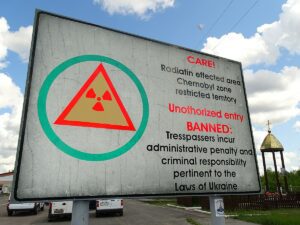
“Chernobyl’s Emergent Landscapes in Narratives by Christa Wolf and Alina Bronsky.” Co-authored with Heather I. Sullivan. Gegenwartsliteratur XIX: Ecocriticism (2020): 75-97.
The essay explores the surprising developments in Chernobyl’s radioactive aftermath as embodiment of the Anthropocene’s emergent environments in two German novels: Christa Wolf ’s Störfall: Nachrichten eines Tages (1987) providing a multifaceted narrative of the day of the accident and probing official news, everyday life, and narrative convention; and Alina Bronsky’s Baba Dunjas Letze Liebe (2015) describing a fictional village in the exclusion zone where people adapt to their radioactive surroundings. While both texts illustrate evocative pain about environmental damage when gardens are transformed into uncanny radioactive vegetable plots, they also unsettle common assumptions and document the narrators’ resilience in a time of crisis, opening the contaminated world for uncomfortable considerations on a planet where there is no escape from pollution.
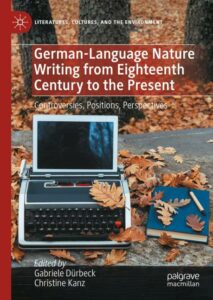
“Humboldtian Writing for the Anthropocene.” Deutschsprachiges Nature Writing von Goethe bis zur Gegenwart –Kontroversen, Positionen, Perspektiven, eds.Gabriele Dürbeck and Chrstine Kanz. Stuttgart: Metzler, 2020. 115-30.
Reprinted in: German-Language Nature Writing from Eighteenth Century to the Present: Controversies, Positions, Perspectives, eds. Gabriele Dürbeck and Chrstine Kanz. New York: Palgrave Macmillan, 2024. 103-19.
Humboldt embodies the wide-ranging curiosity and fascination with nature shared by eminent nature writers of the late eighteenth and nineteenth century. In fact, he much influenced British and North American writers such as Ralph Waldo Emerson, Henry David Thoreau, Charles Darwin, George Perkins Marsh, Clarence King, and John Muir, as Aaron Sachs (2006), Laura Dassow Walls (2009), and Andrea Wulf (2015) have convincingly shown.
Yet this essay argues that placing Humboldt in the tradition of Western and especially Anglo-American Nature Writing is ultimately problematic since it denies Humboldt’s connections to South and Central American intellectuals and scientists. Moreover, terming Humboldt a nature writer downplays his inherent concerns with human cultures and civilizations. The Nature Writing tradition originating in Europe and the United States delineated particular environments in romantic and nostalgic terms, denoting a position of privilege both in terms of its authors and settings described. In the Anthropocene, when the concept of “nature” as a whole has become increasingly tenuous, classifying Humboldt as a nature writer would be unjustifiable reductive.
 “Tracing Romanticism in the Anthropocene: An Ecocritical Reading of Ludwig Tieck’s The Rune Mountain.”
“Tracing Romanticism in the Anthropocene: An Ecocritical Reading of Ludwig Tieck’s The Rune Mountain.”
Romantic Legacies: Transnational and Transdisciplinary Contexts, ed. Shun-Liang Chao and John Michael Corrigan. London: Routledge, 2019. 195-212.
In our current age of the Anthropocene, Romantic dreams of a wholesome, unscathed nature seem more distant than ever. Yet this chapter suggests that Romantic literature, while not posing solutions to accelerating environmental dilemmas, contributes relevant insights to the challenges at hand. Specifically, I chart two qualities that make Romantic enquiries timely for environmental debates: first, an openness and mixing of genres that provides new impetus to established and predetermined narrative modes; second, a fluidity of boundaries between humans and nature that permeates Romantic thought and reflects some of the insights of recent theories on material ecocriticism. Whereas the latter offers a theoretical framework to scrutinise the systematic separation of human and nonhuman life, Romantic characters model an embeddedness in a nature that remains animated, inexplicable, and indefinite.
I draw on Ludwig Tieck’s Rune Mountain (Der Runenberg, 1804)—a tale Thomas Carlyle translated and published in German Romance (1827)—as an example to probe Romantic notions of nature in a time of ecological crisis. Written overnight in 1802, Rune Mountain, a short enigmatic tale that has long puzzled readers and scholars alike, shows the destructive consequences of perceiving the world in strictly dualistic terms, encouraging us to face the unexpected, mysterious, and strange forces of nature. After pointing to the insufficiency of narrative tropes such as tragedy, apocalypse, pollution, and the sublime to meet the challenges of our ecological decline, I discuss the timeliness of Romantic approaches embracing the fantastic, grotesque, and strange. My analysis then shows how Tieck specifically rejects binary models and instead blurs boundaries in genre, structure, and plot.
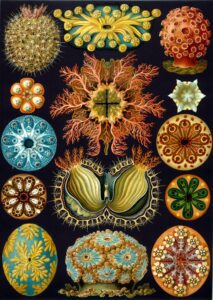
“Human and Non-human Agencies in the Anthropocene.” Co-authored with Gabriele Dürbeck and Heather I. Sullivan. Ecozon@ 6.1 (2015): 118-36.
Translated into Korean and published in: Ilryuse: Jomang goa Jeonmang (The Anthropocene: Perspectives and Prospects). Seoul, Korea: DD World, 2016.
The era of human impact throughout the Earth’s biosphere since the Industrial Revolution that has recently been named the Anthropocene poses many challenges to the humanities, particularly in terms of human and non-human agency. Using diverse examples from literature, travel reflections, and science that document a wide range of agencies beyond the human including landscape, ice, weather, volcanic energy or gastropods, and insects, this essay seeks to formulate a broader sense of agency. All of our examples probe new kinds of relationships between humans and nature. By configuring a close interconnection and interdependence between these entities, the Anthropocene discourse defines such relationships anew. On the one hand, our examples highlight the negative effects of anthropocentric control and supremacy over nature, but on the other, they depict ambivalent positions ranging from surrender and ecstasy to menace and demise that go hand in hand with the acknowledgment of non-human agencies.

“The Return of the Bergfilm: Nordwand (2008) and Nanga Parbat (2010).”
The German Quarterly 87.4 (Fall 2014): 416-39.
Offering viewers a filmic Vergangenheitsbewältigung of the German mountaineering past, the two recent features Nordwand (2008) and Nanga Parbat (2010) hark back to the 1920s German Bergfilm. While Nordwand features a mise-en-scène, character constellation, and plot strikingly similar to the earlier Bergfilme, Philipp Stölzl takes great care to imbue his film with an anti-Nazi message. Yet Stölzl’s insistence upon an Alpine space stripped of complexities and contexts in combination with his fusion of historical facts and melodrama offers German viewers a less burdened and easily digestible approach to the past. In Nanga Parbat, Joseph Vilsmaier also presents a kind of filmic Vergangenheitsbewältigung of the German mountaineering past by representing mountaineering as an act of postwar rebellion in the spirit of 1968. By presenting free-spirited, morally upright, and ideologically untainted mountain men, both Nordwand and Nanga Parbat at once resume the moral and aesthetic continuum of the Bergfilm and tend to normalize the historically troublesome connections between mountaineering and Nazism. In this way, the films—albeit unwillingly—rehearse some of the same tropes that characterized the Bergfilm in the first place, staging the divide between nature and culture, or man and woman, as an eternal, ahistorical struggle.